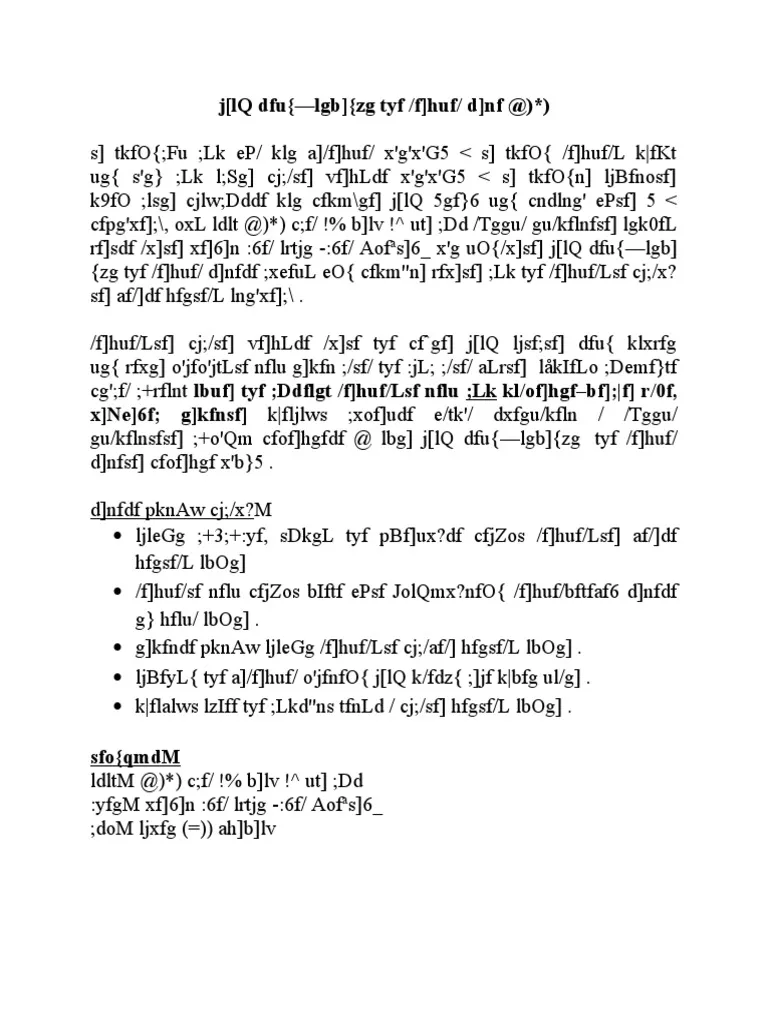What Is a Career Fair Cover Letter?
A career fair cover letter is a brief, targeted document accompanying your resume, specifically tailored for a career fair. Unlike a general cover letter sent for a job application, this letter’s purpose is to introduce yourself, express your interest in a particular company or role, and briefly highlight why you’re a strong candidate. It’s your opportunity to make a positive first impression before, during, or after the career fair. Think of it as your personal advertisement, designed to capture the recruiter’s attention and prompt them to want to learn more about you and potentially invite you for an interview. It’s a crucial tool for making the most of your career fair experience and can significantly increase your chances of landing an interview.
Why You Need a Career Fair Cover Letter
In the competitive landscape of a career fair, standing out is key. A well-crafted career fair cover letter sets you apart from the crowd. It demonstrates your genuine interest in the company and the roles they offer. By personalizing your letter, you show that you’ve done your research and are not just sending a generic application. This focused approach can lead to more meaningful conversations with recruiters. Furthermore, the cover letter provides an opportunity to expand on experiences and skills not fully detailed on your resume. It allows you to tailor your qualifications to the specific needs and interests of the company you’re targeting. Using a career fair cover letter can significantly boost your chances of making a memorable impression.
Crafting a Compelling Career Fair Cover Letter
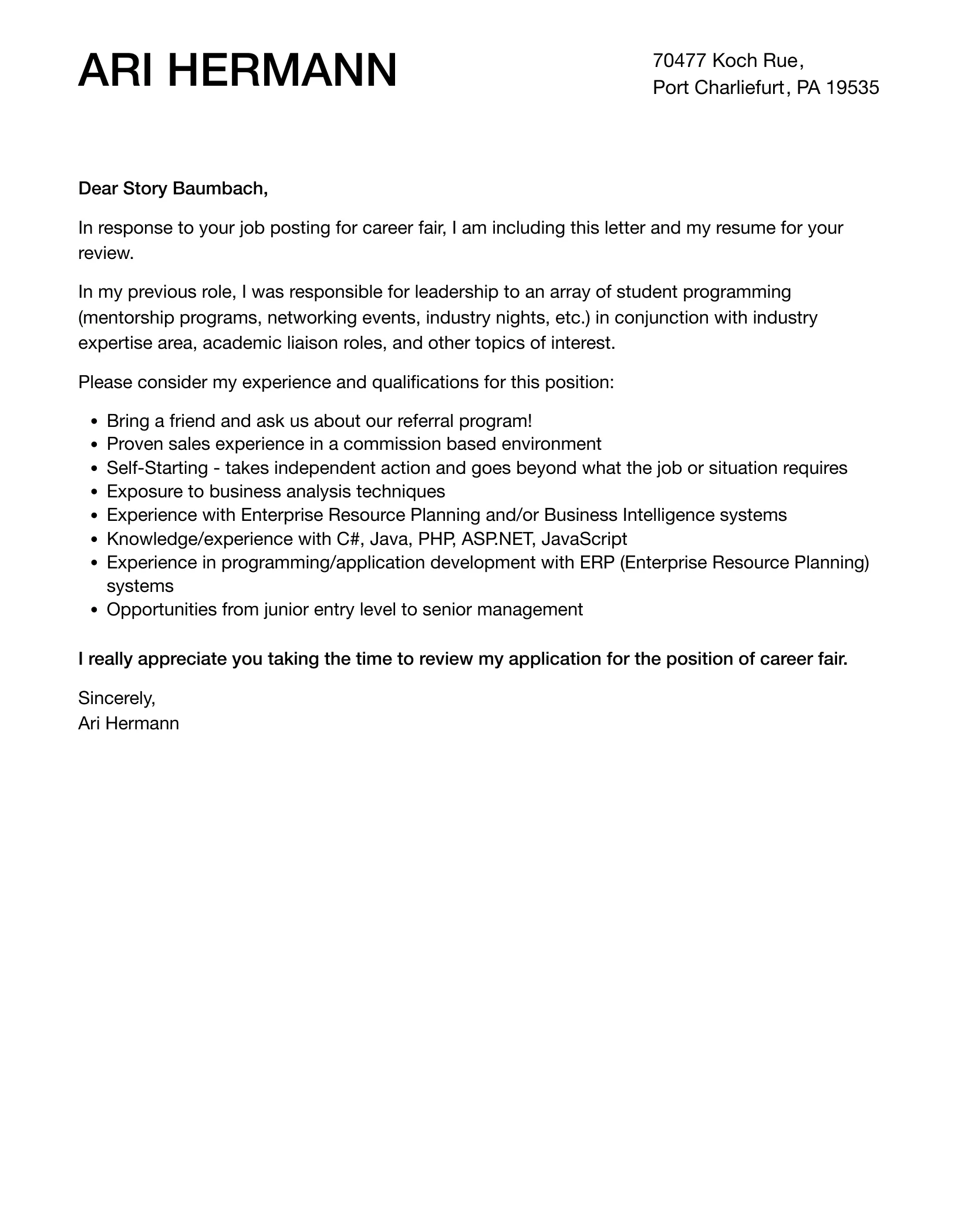
Creating a compelling career fair cover letter involves careful attention to detail, personalization, and clear communication. It should be concise yet comprehensive, effectively conveying your key qualifications and enthusiasm. Remember, recruiters are often busy at career fairs, so your letter needs to be easily digestible. Focus on what makes you a good fit for the roles offered by the company. The goal is to make the recruiter want to learn more about you. Every aspect of your letter, from the formatting to the content, should reinforce your professionalism and dedication. Here’s a structured breakdown of key components to help you create a letter that gets noticed. (career-fair-cover-letter-guide.webp)
Header Information
Your header serves as the first point of contact and should include your name, address, phone number, and email address. This information is essential for the recruiter to easily reach you. Ensure your contact information is up-to-date and professional. Use a clear and readable font. Proper formatting shows attention to detail and gives a professional impression. Your goal is to make it effortless for the recruiter to connect with you for follow-up communication or an interview. Keep your contact details concise, and easy to find. Proper formatting is important for recruiters, so ensure your contact details are always up-to-date and easy to read. (career-fair-header-info.webp)
Your Contact Information
Start with your full name, followed by your current address. Include a professional-looking phone number and a dedicated email address. Avoid using nicknames or casual email addresses. Make sure you check your voicemail regularly and respond to emails promptly. Accuracy is paramount; double-check all information. Present this information in a clear, concise manner to ensure the recruiter can easily contact you after the career fair. Keep the presentation simple and professional.
Recipient’s Information
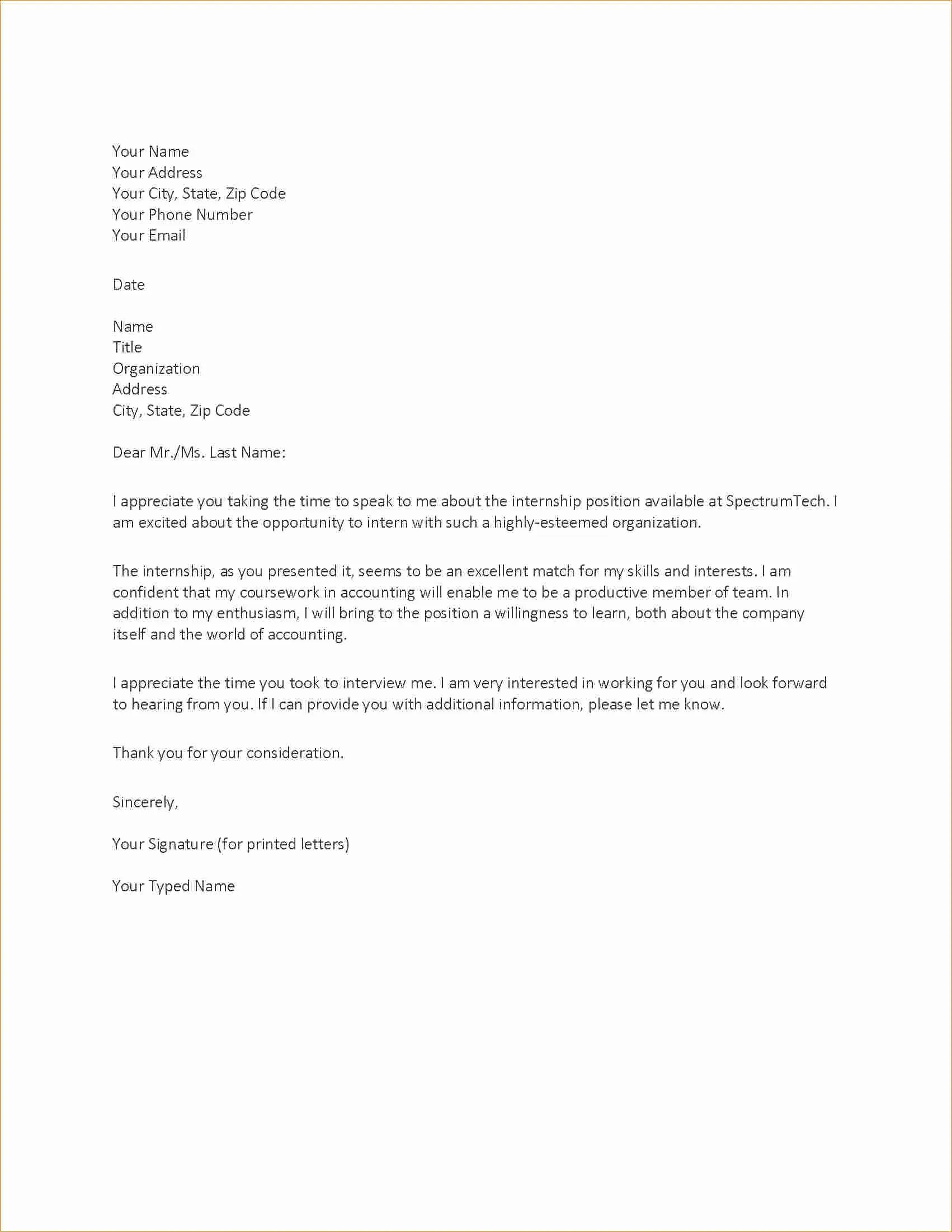
If possible, address the cover letter to a specific person, such as the hiring manager or a recruiter from the company. Research the company’s website or LinkedIn to find the right contact. If you can’t find a specific name, use a professional title like “Hiring Manager” or “Recruiting Team.” This shows you’ve taken the initiative to research the company. Including the recipient’s name personalizes your application. The inclusion of the hiring manager’s name makes a big difference. If no name can be found, a general salutation is okay.
The Salutation
Use a professional salutation, such as ‘Dear Mr./Ms. [Last Name]’ or ‘Dear Hiring Manager.’ If you are unsure of the recipient’s gender, use their full name. Avoid informal greetings like ‘Hello’ or ‘Hi.’ The salutation sets the tone for your letter. This establishes a formal tone. A proper salutation immediately gives off a professional impression. Starting the letter correctly is very important, as it demonstrates professionalism and respect. Getting the salutation right indicates that you take your job search seriously and understand the requirements.
Body of the Cover Letter
The body of your career fair cover letter is where you highlight your qualifications and express your interest. It typically consists of a few paragraphs, each serving a specific purpose. Your content should be tailored to the companies you’re targeting and the roles you are interested in. This should clearly and concisely explain why you’re a good fit for that specific role at that particular company. It’s your opportunity to demonstrate your value and connect with recruiters.
Opening Paragraph
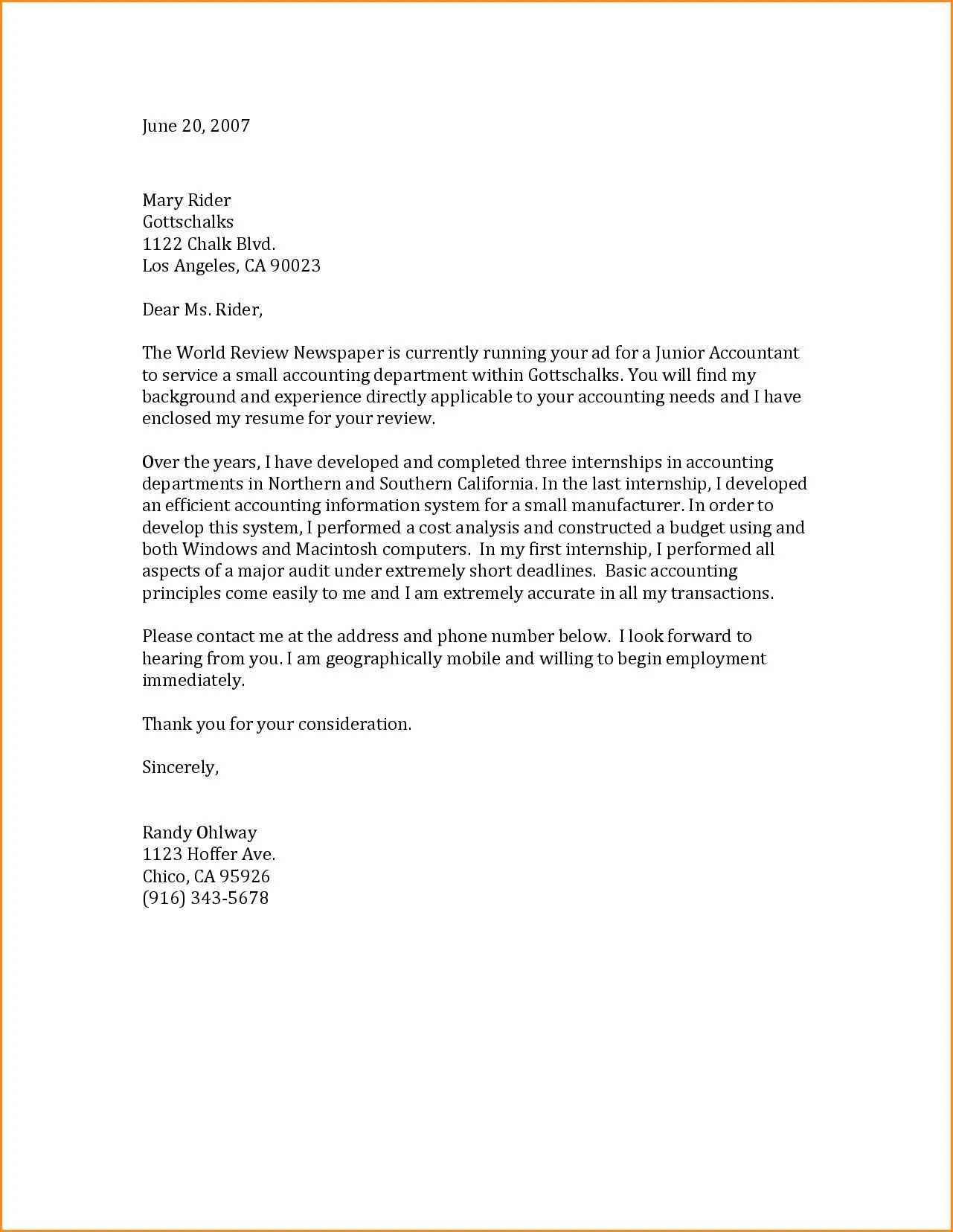
Start by stating the purpose of your letter: to express your interest in a specific position or type of role within the company. Mention where you saw the job posting or how you learned about the company. Then, briefly introduce yourself, including your current status, such as a student or recent graduate. This sets the stage and grabs the reader’s attention. Keep it concise and to the point, emphasizing your enthusiasm. This first paragraph should clearly outline why you are reaching out and what you are hoping to achieve. Express your genuine interest, and make it easy for recruiters to understand your focus.
Highlighting Your Skills
In this section, highlight the key skills and experiences that align with the company’s needs. Use specific examples to illustrate your abilities, and quantify your accomplishments whenever possible. Tailor your skills to match the requirements of the roles you are interested in. Refer back to your resume for support, but don’t simply restate it. Focus on the most relevant skills and experiences. You want to show them that you have the skill sets they are looking for. This gives recruiters a clear insight into your capabilities. (career-fair-skills.webp)
Showcasing Your Enthusiasm
Show your genuine interest in the company and the role. Mention specific aspects of the company’s work that excite you. Explain why you want to work there, and what draws you to the organization’s mission. Demonstrate your understanding of their goals and values. Research the company to show that you are very much interested in their business. Personalize your letter to fit the company. This shows your commitment and eagerness, making a memorable impact on the recruiter. Showing your enthusiasm will increase your chances of making an impression. (career-fair-enthusiasm.webp)
Expressing Your Intent
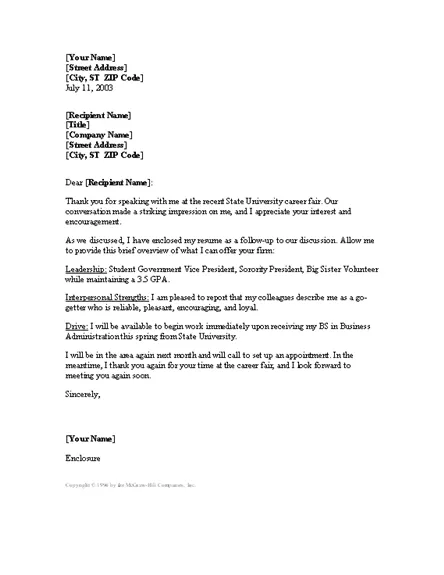
Clearly state what you are seeking from the career fair or the company. Indicate the roles you are interested in and your availability for an interview. Mention any specific information or resources you’re interested in learning about. Communicate your availability and eagerness to connect. Make sure your intentions are clearly stated, so the recruiter knows what you are hoping to achieve. It’s a good idea to be clear about the next steps you hope to take, such as setting up an interview. Make your intentions clear to the recruiter.
Call to Action
Conclude with a call to action. Express your eagerness to discuss your qualifications further and your availability to interview. Thank the recruiter for their time and consideration. Provide an easy way for them to reach you, such as your phone number and email address, if it’s not already in the header. This makes it easy for the recruiter to respond. A strong call to action is about making the next step as effortless as possible for the recruiter. It directly encourages them to take action. (career-fair-call-to-action.webp)
Closing and Signature
Use a professional closing, such as “Sincerely,” or “Best regards,” followed by your full name. If you are sending a physical copy, leave space for your signature above your typed name. Maintain a professional tone throughout. A well-crafted closing creates a lasting positive impression. This gives a professional impression to the recipient. This is the last impression, so it must be good. (career-fair-closing.webp)
Proofreading and Editing
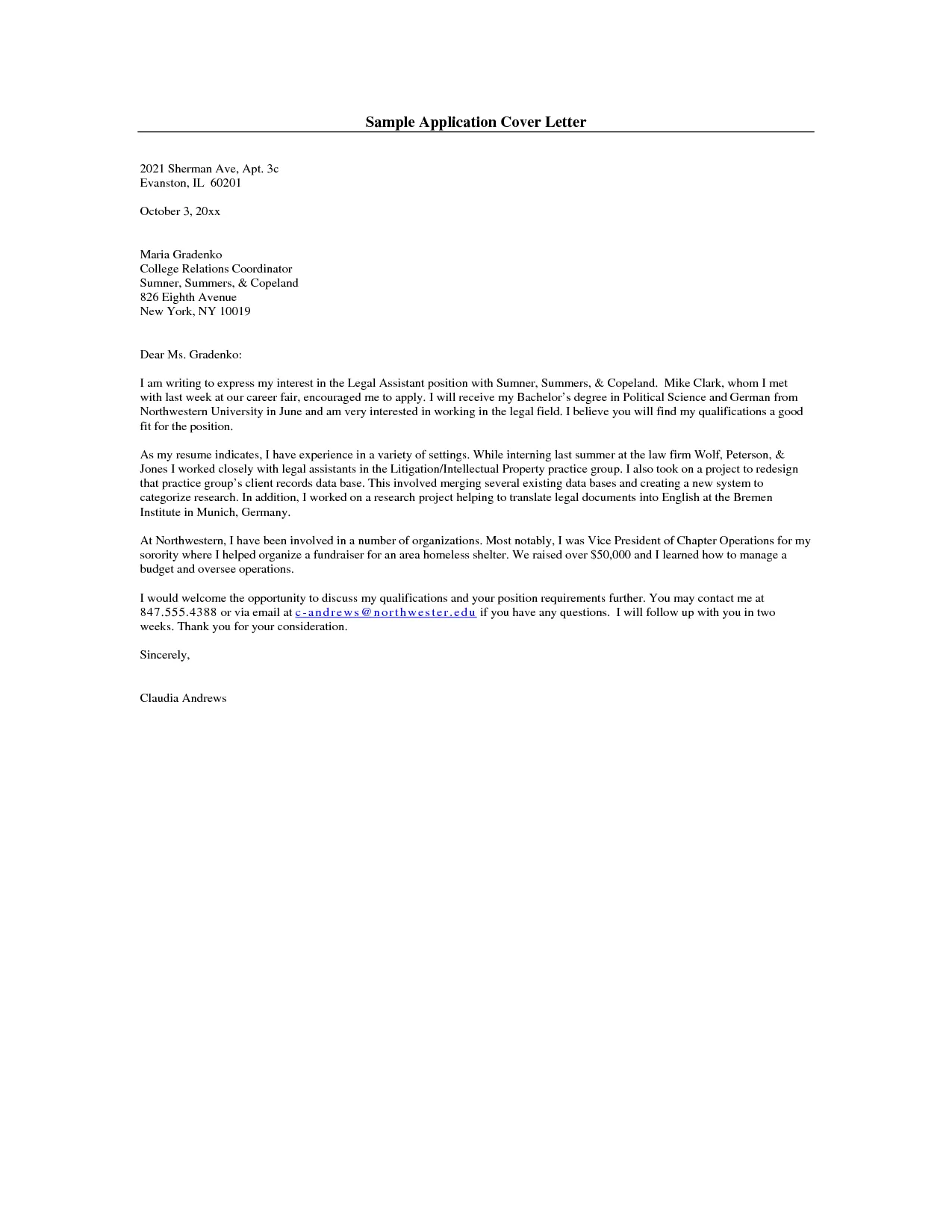
Before submitting your cover letter, proofread it carefully for any grammatical errors, spelling mistakes, or typos. Pay close attention to sentence structure and clarity. Have someone else review your letter to catch any errors you may have missed. A polished, error-free cover letter reflects your attention to detail and professionalism. A well-proofread letter gives recruiters the confidence to know that you are competent. It’s a good practice to always proofread before sending. (career-fair-proofreading.webp)
